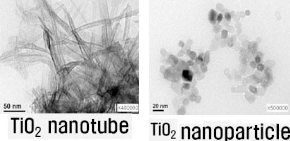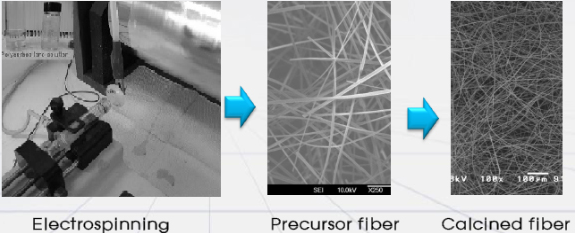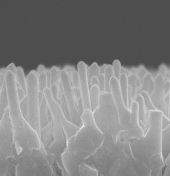Nano structure & functional materials laboratory (Prof : Doh-Hyung Riu)
Depending on how the microstructure of a material changes, the physical and chemical properties of the material can be greatly affected. If we can fully control this, we will be one step closer to new materials with desired properties.
In this laboratory, we are researching materials that express new functions by controlling the nanostructure of nanostructures (nanoparticles, coatings, fibers, wires, rods, etc.).
Major Research
A. Nanoparticles
Nano particles for Solar Cell
Schematic of Dye-Sensitized Solar Cells (DSSCs) and TiO2 Particle Shape
Controlling the shape and size of nanoparticles to develop structures that exceed the optoelectronic performance of conventional P25 TiO2 layers.
B. Nano coating
Fabrication of TCO, FTO, by spray pyrolysis deposition.
FTOs have good thermal stability and are composed of relatively inexpensive elements. In the laboratory, FTO is prepared by spray pyrolysis.
C. Nano fiber
Fabrication of ceramic nanofibers through electrospinning. TiO2 nanofibers are characterized by high specific surface area and NiFe2O4 have high coercive force. Soft mats made of sub-1μm SiC nanofibers feature a high surface area and are applied to thermal cells that require stability at high temperatures.
D. Nano wire, nano rods
Effect of Two dimension structure
A typical nanorod grows in a direction of lowering the surface energy to form a single crystal.
In addition, low-dimensional effects can be seen, and the bandgap can be adjusted due to quantum confinement, showing unique electrical and physical properties.
Current research project
A. Development of ceramic capillary technology for wire bonding
This project was commissioned by Hankook Precision PECO, and research is being conducted to make a capillary tip with excellent characteristics.
As a feature of wire bonding, durability and reliability of the capillary tip against impact and high temperature are required, and not only the tip itself but also the resulting wire bonding pitch, wire adhesion and fine pitch are required. For these required physical properties, research is being conducted for the purpose of improving durability and controlling surface roughness through Cr2O3 coating and thermal grooving.
B. development of silicon carbide fiber manufacturing technology
Composite materials using SiC fibers are highly efficient, lightweight, and highly reliable materials for ultra-high temperatures, and are attracting attention in the field of energy efficiency improvement and renewable energy.
Currently, it is mainly used in the aerospace field, but its application fields are gradually expanding in the future. In order to manufacture SiC fibers, processes from synthesis of polycarbosilane as a precursor to spinning, stabilization, and heat treatment are required.
In this laboratory, the purpose is to synthesize various kinds of raw materials through polycarbosilane, and to manufacture ultra-fine high-strength SiC fibers through a fiber stabilization process based on this.
C. Development of silicon carbide single crystal powder manufacturing technology
Ultra-high purity SiC material is a key material applied to new renewable energy (solar cells, wind power generation, etc.) and high-efficiency power conversion energy semiconductors used in green cars, LEDs, and semiconductor processes, which are future growth engines. It is a key material for national infrastructure and future green industries. is receiving great attention in
As a key technology for utilizing SiC as a semiconductor material, it is essential to manufacture ultra-high purity SiC raw materials and grow them into single crystals.
In this laboratory, we aim to manufacture the raw materials necessary for such single crystal growth in an optimized form.
In order to implement nanotechnology, research on the manufacturing and characteristics of nanoparticles, methods of manipulating and arranging nanomaterials to have desired functions, and research on nanomeasurement methods are required. In order to measure the properties of nanomaterials, new measurement methods suitable for the nanoscale must be developed.
 Introduction
Introduction
 Faculty
Faculty
 Curriculum
Curriculum




